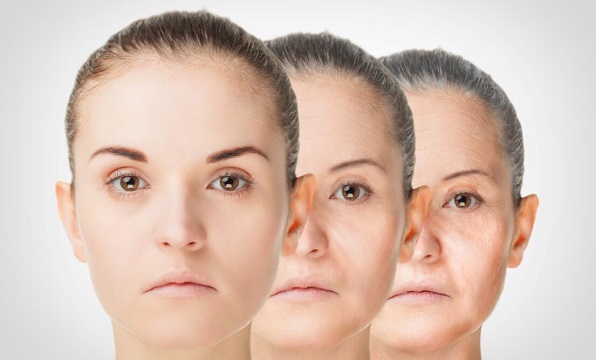- Email:[email protected]
- Tel: (852)51044851
-
Stem Cells For Restoring Eyesight – New Delivery Method
Editor’s Choice Academic Journal Main Category: Stem Cell Research Also Included In: Eye Health / Blindness Article Date: 13 Dec 2012 – 1:00 PST A new technique for transporting stem cell therapy to the eye has been developed by a group of engineers at the University of Sheffield, England. They hope this discovery can aid in repairing eyes that have been damaged by disease or accident in a natural way. In a new study, published in the journal Acta Biomaterialia, a team of experts detail their technique for creating membranes to help in the grafting of stem cells onto the eye, a way to imitate attributes of the eye. This technology has been developed to treat injuries to the cornea, the see-through layer on the front of the eye, one of the biggest causes of blindness around the world. The research team used methods known as microstereolithography and electrospinning to create a disc of biodegradable material which can be placed over the cornea. The disc is then filled with stem cells which multiply, permitting the eye to be fixed naturally. EPSRC Fellow, Dr Ílida Ortega Asencio, from Sheffield’s Faculty of Engineering, says: “The disc has an outer ring containing pockets into which stem cells taken from the patient’s healthy eye can be placed. The material across the centre of the disc is thinner than the ring, so it will biodegrade more quickly allowing the stem cells to proliferate across the surface of the eye to repair the cornea.” An important quality of the disc is that it has pockets to store and protect the stem cells, simulating niches found around the rim of an undamaged cornea. Regular treatments for corneal blindness are corneal transplants, also known as grafting stem cells, onto the eye with the human amniotic membrane from a donor, used as a short-term delivery method for these cells to reach the eye. Occasionally, this treatment can stop working after several years – the fixed eyes do not retain these stem cells, which should be repairing the cornea continuously. If this continuous repair does not take place, thick white scar tissue can develop across the cornea, resulting in partial or total vision loss. The investigators have created the small pockets that are formed in the membrane to aid cells to combine and act as a beneficial storage supply of daughter cells, so that a healthy group of stem cells…
[Read More] -
Dogs and Horses Benefit From Stem Cell Treatments
The use of stem cell treatments for degenerative arthritis in dogs and horses may open the door for the application of such therapies to humans. Using Stem Cells to Treat Arthritis in Dogs Veterinarians have started using stem cell treatments to help treat dogs and horses with degenerative arthritis, Hilary Lehman reports for The Associated Press. The effectiveness of the treatments, however, which cost “around $2,500 to $3,000 per procedure,” has not been verified by independent studies. Despite a lack of scientific evidence, the owners of dogs such as Lucy, a 5-year-old Labradoodle, credit stem cells for significant improvements in Lucy’s health and well being. Lucy suffered from severe rheumatoid arthritis, which made her back limbs unusable. “We didn’t think she’d live anywhere near this long, and I know it’s because of the stem cells,” Carol Fischman, Lucy’s owner, told the AP. Kristin Kirkby, a University of Florida veterinarian who treated Lucy, says that owner reports in five different cases have been extremely positive: dogs that previously had trouble getting around the house and doing their daily activities seem to have regained much of their agility. Adam Gassel, owner of a veterinary clinic in Irvine, Calif., has used the stem cell treatment for nearly 40 dogs. Gassel claims that “all but 20 percent of the animals show some positive response to the therapy, according to their owners and the requests for pain medicine,” AP reports. According to Kirkby, the University of Florida plans to study the animals receiving the procedure, evaluating them at the beginning and end of the process and performing regular checkups. “I think it’s an exciting field,” she told AP. “Undoubtedly the future of scientific research is going this way. It’s early on, especially in the small animal side, to know what the results can be.” In 2003, the California-based company Vet-Stem began developing a stem cell treatment for horses, the AP reports. The therapy “derives stem cells from fat samples taken from dogs and horses,” and is used mainly for the treatment of osteoarthritis, which is the loss of cartilage at the joints. According to Vet-Stem, “the therapy enables animals to replace cartilage and other tissue.” A 2008 Wired article explains how stem cell treatments work. “Adult stem cells, particularly mesenchymal cells that come from muscle, bone and fat, are cells with a powerful ability to replicate and not a lot of personal identity. They easily…
[Read More] -
Continuous supply of rejuvenated stem cells shown as a path to radical longevity
Researchers from Kiel (Germany) have examined why the polyp Hydra is immortal – and unexpectedly discovered a link to ageing in humans. The tiny freshwater polyp Hydra does not show any signs of ageing and is potentially immortal. There is a rather simple biological explanation for this: these animals exclusively reproduce by budding rather than by mating. A prerequisite for such vegetative-only reproduction is that each polyp contains stem cells capabprle of continuous proliferation. Without these stem cells, the animals could not reproduce any more. Due to its immortality, Hydra has been the subject of many studies regarding ageing processes for several years. Studying animal tissue such as those of Hydra – an animal full of active stem cells during all its life – may deliver valuable insight into stem cell ageing as such. „Surprisingly, our search for the gene that causes Hydra to be immortal led us to the so-called FoxO gene“, says Anna-Marei Böhm, PhD student and first author of the study. The FoxO gene exists in all animals and humans and has been known for years. However, until now it was not known why human stem cells become fewer and inactive with increasing age, which biochemical mechanisms are involved and if FoxO played a role in ageing. FoxO has been found to be particularly active in centenarians – people older than one hundred years – which is why we believe that FoxO plays a key role in ageing – not only in Hydra but also in humans“. However, the hypothesis cannot be verified on humans, as this would require a genetic manipulation of humans. PNAS – FoxO is a critical regulator of stem cell maintenance in immortal Hydra There is a project that is trying to increase the supply of a persons own stem cells by a million times and then rejuvenate the stem cells. They are trying to fund raiser for a kickstarter style project. I think it is worth a shot to get the project funded for another $69000, to give this approach a try Centagen is a biotechnology company that is developing medical therapies that utilize a patient’s own adult stem cells. The company has a new technology to expand adult stem cells in vitro (in the lab) up to 1 million times, then rejuvenate them and inject the stem cells back into the person from which they came. This will help repair and rejuvenate…
[Read More] -
Stem cells from blood may banish wrinkles
Injections of stem cells taken from patients blood may finally banish wrinkles if clinical trials of a new treatment are successful. The first clinical trials are to begin shortly on a treatment that uses stem cells purified from a patient’s blood to combat their own wrinkles Photo: ALAMY By Richard Gray, Science Correspondent 8:30AM BST 09 Sep 2012 For some, wrinkles are seen as a sign of character. For most, they are an unwelcome reminder of ageing. However, scientists are developing a method that may finally end the need for the routine of treatments and moisturisers used to try to keep facial lines at bay. The first clinical trials are to begin shortly on a treatment that uses stem cells purified from a patient’s blood to combat their own wrinkles. The cells will be injected beneath the skin where they will grow into new skin cells to help restore the elasticity, claims Pharmacells, the Glasgow-based company behind the technology. Athol Haas, the company’s chief executive, said: “The skin has a natural elastic property which comes from cells known as fibroblasts. “The ability of the body to produce this elastic material slows down with age because the number of these fibroblasts decrease. “By introducing large numbers of stem cells into the right place, we are increasing the ability of the body to produce this material. It is still in its early stages but we hope to begin phase one trials within the next 12 months.” Until recently, anyone hoping to get rid of their wrinkles had to rely on cosmetic treatments that injected synthetic collagen under the skin as a filler to remove the lines. Botox has now become popular for cosmetic treatments, where a neurotoxin from the bacteria Clostridium botulinum is injected to immobilise the muscles that can cause wrinkles. Fibroblast cells produce collagen and help maintain the skin’s structural integrity. Pharmacells, which will be conducting its first clinical trial with a clinic in Hong Kong, uses a technique to purify an unspecialised type of cell, known as blastocyst-like stem cells, which can develop into many different types of tissues in the body. It will be the first therapy to use this type of cell and the company also hopes to develop new techniques to treat diseases such as heart disease and osteoarthritis. Rajiv Grover, a plastic surgeon and president elect of the British Association of Aesthetic Plastic Surgeons, said…
[Read More] -
Treatment of Lupus
Gu Z, Jiang J, Tan W, Xia Y, Cao H, Meng Y, Da Z, Liu H, Cheng C. Author information Abstract Our and other groups have found that bone marrow-derived mesenchymal stem cells (BM-MSCs) from systemic lupus erythematosus (SLE) patients exhibited senescent behavior and are involved in the pathogenesis of SLE. Numerous studies have shown that activation of the p53/p21 pat hway inhibits the proliferation of BM-MSCs. The aim of this study was to determine whether p53/p21 pathway is involved in regulating the aging of BM-MSCs from SLE patients and the underlying mechanisms. We further confirmed that BM-MSCs from SLE patients showed characteristics of senescence. The expressions of p53 and p21 were significantly increased, whereas levels of Cyclin E, cyclin-dependent kinase-2, and phosphorylation of retinoblastoma protein were decreased in the BM-MSCs from SLE patients and knockdown of p21 expression reversed the senescent features of BM-MSCs from SLE patients. Our results demonstrated that p53/p21 pathway played a n important role in the senescence process of BM-MSCs from SLE.
[Read More]
Category
Recent Updates
- Directed Conversion of Alzheimer’s Disease Patient Skin Fibroblasts into Functional Neurons
- Generation of human vascular smooth muscle subtypes provides insight into embryological origin–dependent disease susceptibility
- Stem cells responsible for ‘thinking’ brain cells identified
- Stem cell therapy combined with liposuction may help burns victims
- Kidney transplants better with stem cells
- Houston Plastic Surgeon Dr. Henry Mentz to Present Stem Cell Expertise at International Conference






SUBSCRIBE TO OUR NEWSLETTER